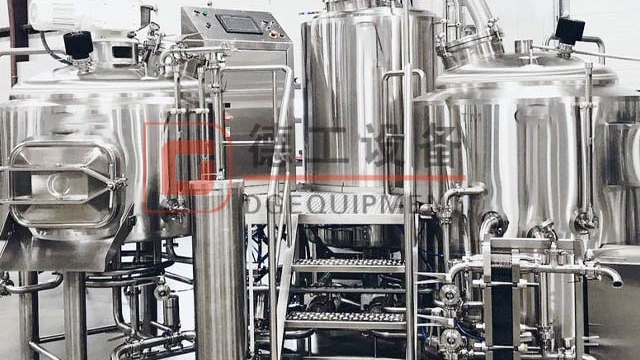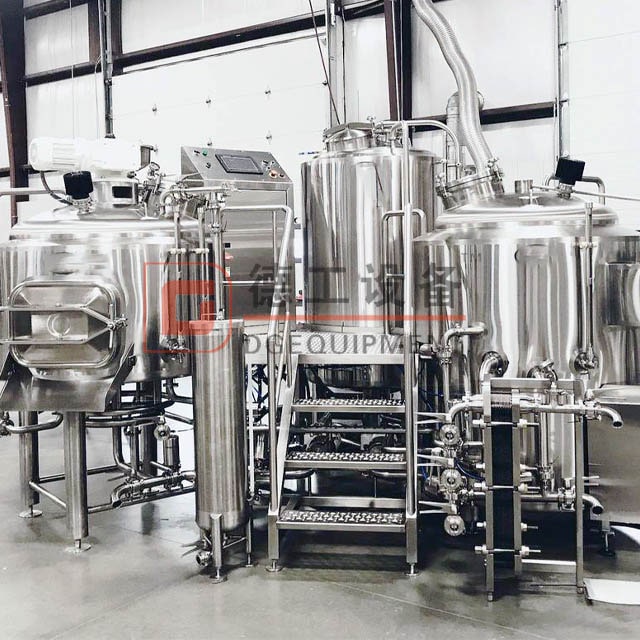
10 Must-Have Brewery Equipment for Crafting the Perfect Brew
Crafting the perfect brew requires the right tools and equipment. From fermentation vessels to temperature control systems, having the right brewery equipment is essential for brewers to achieve the desired flavors and characteristics in their beers. In this comprehensive guide, we will explore the ten must-have pieces of brewery equipment that every home or commercial brewer should consider investing in. Whether you are just starting out or looking to upgrade your existing setup, this guide will provide valuable insights into the world of brewery equipment and help you make informed decisions. So, let’s dive in and explore the fascinating world of brewery equipment!
1. Mash Tun
A crucial piece of brewery equipment is the Mash Tun. This vessel plays a vital role in the beer-making process, specifically during mashing, the step where the starches in grains are converted into fermentable sugars.
The Mash Tun acts as a giant steeping vessel where crushed malted grains, known as the mash, are combined with hot water. Inside the Mash Tun, enzymes present in the malt are activated, breaking down the starches into sugars. The temperature and duration of this process determine the beer’s characteristics, such as flavor and body.
To control the temperature and ensure efficient mashing, Mash Tuns are often equipped with a heating element and an agitation system. The heating element allows brewers to adjust the temperature to the desired range for enzyme activity, while the agitation system helps evenly distribute heat and promote an even extraction of sugars from the grain.
The shape and size of Mash Tuns can vary depending on the brewery’s production volume and brewing style. However, they typically feature an insulated vessel with a false or perforated bottom that allows the liquid, known as wort, to be separated from the grain husks after mashing. This allows for easy removal of the spent grains and collection of the sweet wort, ready for further stages of fermentation.
Nano Brewery Equipment
In conclusion, the Mash Tun is a fundamental piece of brewery equipment that facilitates the crucial process of mashing. With its ability to control temperature and promote sugar extraction, the Mash Tun plays a pivotal role in crafting the perfect brew.
2. Fermenters
Fermenters are an essential component of brewery equipment, playing a crucial role in the beer production process. These vessels provide an ideal environment for yeast to convert sugars into alcohol, resulting in the flavorful and alcoholic beverage we all love.
When choosing a fermenter for your brewery, considerations such as capacity, material, and design are vital. Stainless steel fermenters are widely favored due to their durability, ease of cleaning, and resistance to damage from acids and chemicals. Additionally, they offer a high level of temperature control, crucial for maintaining the fermentation process.
Another popular choice for fermenters is plastic, which provides a more cost-effective option for those starting out in the brewing industry. However, it’s important to note that plastic fermenters are more prone to scratching and harboring bacteria, necessitating thorough cleaning and care to maintain optimal brewing conditions.
Innovative designs, such as conical fermenters, have gained popularity for their ability to separate sediment from the beer during the fermentation process. This allows for better control over the final product’s clarity and flavor. Conical fermenters also make it easier to harvest yeast, eliminating the need for additional equipment.
Investing in high-quality fermenters is crucial for ensuring a successful brewing operation. Remember to consider your brewery’s specific needs, budget, and long-term goals when selecting the perfect fermenter for crafting your next batch of exceptional brew.
3. Kegging System
The kegging system is an essential piece of brewery equipment for any serious brewer. It allows for efficient and convenient storage and dispensing of your beer. With a good kegging system, you can ensure that your brew stays fresh and carbonated until it reaches the glass of your eagerly awaiting customers.
One important component of a kegging system is the keg itself. These are typically made of stainless steel and come in various sizes to accommodate different batch sizes. The keg acts as a sealed container, preserving the quality of your beer by keeping out oxygen and other contaminants.
To dispense the beer from the keg, you will need a keg coupler. This device connects the keg to the tap system, allowing the beer to flow out smoothly. There are different types of keg couplers available, depending on the type of keg you are using. It’s important to choose the right coupler to ensure a proper fit and dispensing of your beer.
Another key component of a kegging system is the CO2 (carbon dioxide) tank and regulator. The CO2 tank holds the pressurized gas that is used to carbonate and dispense the beer. The regulator allows you to control the pressure of the CO2, ensuring that it’s at the right level for carbonation and dispensing.
In conclusion, a well-designed kegging system is a must-have for any brewery. It enables efficient storage and dispensing of your beer while maintaining its quality and flavors. With the right kegs, couplers, and CO2 setup, you can ensure that your brews are enjoyed by beer enthusiasts in all their carbonated glory.




